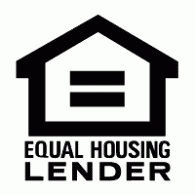In recent years, bank statement loans have become increasingly popular as an alternative form of financing. This type of loan is for those who may not meet traditional lending criteria. These loans are specifically designed for self-employed individuals, small business owners, and entrepreneurs. Who have difficulty providing the necessary documentation to prove their income.
What are bank statement loans?
Bank statement loans, also known as self-employed loans. Alternatively known as income verification loans. They are a type of mortgage that allows borrowers to use their bank statements as proof of income. Instead of providing traditional income documentation such as pay stubs or W-2s, borrowers can use their bank statements. This is to demonstrate their income over a specific period, typically ranging from 12 to 24 months.
The lender will review the borrower’s bank statements to determine their income and assess their ability to repay the loan. Typically, lenders will require a minimum of 12 months of bank statements, and some may require up to 24 months. The bank statements will need to show consistent deposits. The lender will also consider the borrower’s credit score, debt-to-income ratio, and other financial factors when making a lending decision.
How do bank statement loans work?
Bank statement loans do not work similarly to traditional mortgages. The borrower will apply for the loan and provide the necessary documentation, including their bank statements. The lender will review the application. Then assess the borrower’s creditworthiness based on their credit score, debt-to-income ratio, and other financial factors.
If approved, the lender will offer a loan with specific terms, including the interest rate, loan amount, and repayment period. The borrower will need to review and sign the loan agreement. The lender will disburse the funds directly to the borrower or their designated account.
One key difference between bank statement loans and traditional mortgages is the interest rate. Bank statement loans typically have higher interest rates than traditional mortgages. This is due to the higher risk associated with borrowers who cannot provide traditional income documentation. However, these loans offer an alternative for those who may not qualify for traditional mortgages.
What is required for a bank statement loan?
To apply for a bank statement loan, borrowers will need to provide the following documentation:
- Bank statements: Borrowers will need to provide a minimum of 12 months of bank statements. Some lenders may require up to 24 months. The bank statements will need to show consistent deposits to demonstrate the borrower’s income.
- Credit score: Lenders will assess the borrower’s creditworthiness based on their credit score. There is no specific minimum credit score required. Borrowers with higher credit scores are more likely to be approved and may receive more favorable loan terms.
- Debt-to-income ratio: Lenders will also consider the borrower’s debt-to-income ratio. Which is the percentage of the borrower’s monthly income that goes toward debt payments. A lower debt-to-income ratio indicates that the borrower has more disposable income. May be more likely to repay the loan.
- Employment history: Bank statement loans are designed for self-employed individuals. Lenders may still require a minimum employment history to demonstrate stability.
Case Studies
Let’s take a look at two hypothetical case studies to understand how bank statement loans work in real life.
Case Study 1: Sarah, a freelance graphic designer
Sarah is a freelance graphic designer who has been self-employed for the past two years. She earns a good income but has difficulty providing traditional income documentation as her income varies from month to month. She decides to apply for a bank statement loan to purchase a new home.
Sarah provides 24 months of bank statements to the lender, which show consistent deposits and a steady income. The lender assesses her credit score and debt-to-income ratio and determines that she is a good candidate for a loan. The lender offers Sarah a loan with a 5.5% interest rate, which is higher than traditional mortgages but still within her budget.
Sarah reviews and signs the loan agreement, and the lender disburses the funds to her designated account. She uses the loan to purchase her dream home and is able to make timely repayments based on the agreed terms.
Case Study 2: John, a small business owner
John is a small business owner who has been running his business for three years. His business is profitable, but he has difficulty providing traditional income documentation as he reinvests most of his profits back into the business. He decides to apply for a bank statement loan to expand his business operations.
John provides 24 months of bank statements to the lender, which show consistent deposits and a steady income. The lender assesses his credit score and debt-to-income ratio and determines that he is a good candidate for a loan. The lender offers John a loan with a 6.5% interest rate, which is higher than traditional mortgages but still within his budget.
John reviews and signs the loan agreement, and the lender disburses the funds directly to his business account. He uses the loan to purchase new equipment and expand his business operations. John is able to make timely repayments based on the agreed terms and is pleased with the success of his business.
Benefits of bank statement loans
Bank statement loans offer several benefits for self-employed individuals, small business owners, and entrepreneurs who may have difficulty providing traditional income documentation. These benefits include:
- Flexible income verification: Bank statement loans allow borrowers to use their bank statements as proof of income, providing flexibility for those who have varying income levels.
- Faster loan approval: Bank statement loans may have a faster approval process compared to traditional mortgages as lenders do not need to review and verify traditional income documentation.
- Alternative financing option: Bank statement loans provide an alternative financing option for those who may not meet traditional lending criteria.
- Customizable terms: Bank statement loans may have customizable terms to suit the borrower’s specific needs and financial situation.
Alternative Financing
Self-employed individuals often face challenges when it comes to obtaining traditional mortgages due to their income documentation requirements. However, bank statement loans offer an alternative financing option for self-employed borrowers.
Click here for various types of mortgage loans for the self employed:
https://www.blakemortgage1.com/harry-original-12-month-bank-statement-pgm/
Bank statement loans are also known as alternative income documentation loans, as they allow borrowers to use their bank statements as proof of income. These loans are often popular among self-employed individuals and small business owners, who may not have traditional income documentation such as W-2s or pay stubs.
The lender typically reviews the borrower’s bank statements for a specified period, such as 12 to 24 months, to determine their income level and stability. The lender may also consider other factors such as the borrower’s credit score and debt-to-income ratio when assessing their eligibility for the loan.
One of the benefits of bank statement loans is their flexibility in income verification. Self-employed individuals may have varying income levels and may not be able to provide traditional income documentation. Bank statement loans allow borrowers to use their bank statements as proof of income, which can provide more flexibility in the application process.
Another benefit of bank statement loans is their faster approval process. As the lender does not need to review and verify traditional income documentation, the loan approval process may be faster compared to traditional mortgages. This can be particularly beneficial for borrowers who need to secure financing quickly.
Case Study 3: Jane, a freelance writer
Jane is a freelance writer who has been working for herself for five years. She has a steady income from her writing projects, but she has difficulty providing traditional income documentation such as W-2s or pay stubs. She decides to apply for a bank statement loan to purchase a new home.
Jane provides 24 months of bank statements to the lender, which show consistent deposits and a steady income. The lender reviews her credit score and debt-to-income ratio and determines that she is eligible for a loan. The lender offers Jane a loan with a 5.5% interest rate, which is higher than traditional mortgages but still within her budget.
Jane reviews and signs the loan agreement, and the lender disburses the funds to her designated account. She uses the loan to purchase her new home and is able to make timely repayments based on the agreed terms.
Case Study 4: Mark, a real estate investor
Mark is a real estate investor who owns several rental properties. He has a steady rental income but has difficulty providing traditional income documentation due to his investment portfolio. He decides to apply for a bank statement loan to purchase a new rental property.
Mark provides 12 months of bank statements to the lender, which show consistent rental income deposits. The lender assesses his credit score and debt-to-income ratio and determines that he is eligible for a loan. The lender offers Mark a loan with a 6% interest rate, which is higher than traditional mortgages but still within his budget.
Mark reviews and signs the loan agreement, and the lender disburses the funds directly to his designated account. He uses the loan to purchase the new rental property and is able to make timely repayments based on the agreed terms.
Bank statement loans offer several benefits for self-employed individuals, small business owners, and real estate investors who may have difficulty providing traditional income documentation. These loans allow borrowers to use their bank statements as proof of income, providing flexibility and faster loan approval. While bank statement loans may have higher interest rates than traditional mortgages, they offer a viable solution for those who may not qualify for traditional financing options.
To apply for a bank statement loan, please click here:
https://blakemortgage.info/secure-1003/login.php
Conclusion
Loans for the self employed provide an alternative financing option for self-employed individuals, small business owners, and entrepreneurs who may have difficulty providing traditional income documentation. These loans allow borrowers to use their bank statements as proof of income, providing flexibility and faster loan approval. While bank statement loans may have higher interest rates than traditional mortgages, they offer a viable solution for those who may not qualify for traditional financing options. It’s important to work with a reputable lender and review the loan terms carefully to ensure that the loan is within your budget and suits your specific needs.






